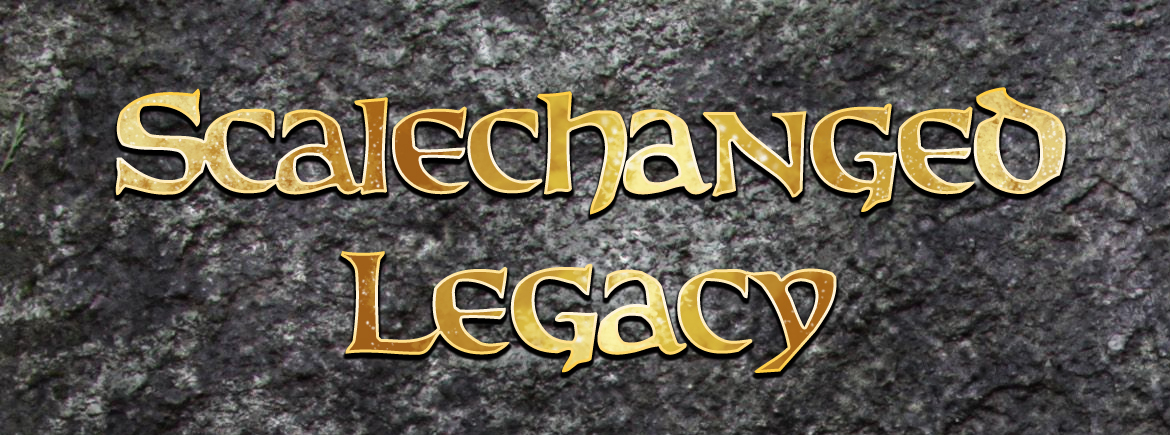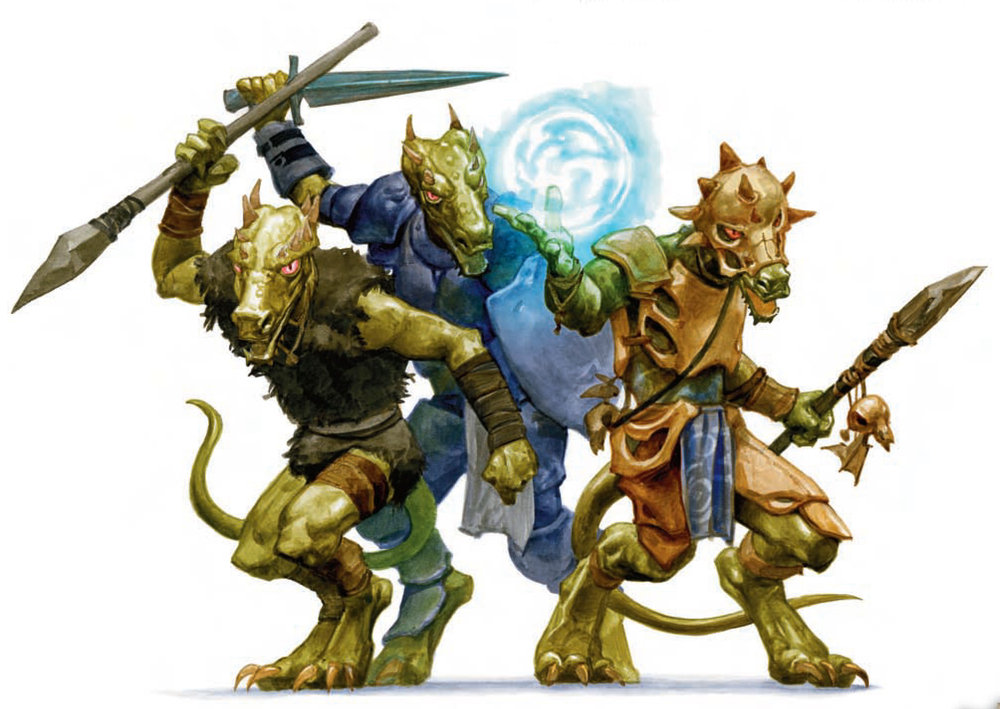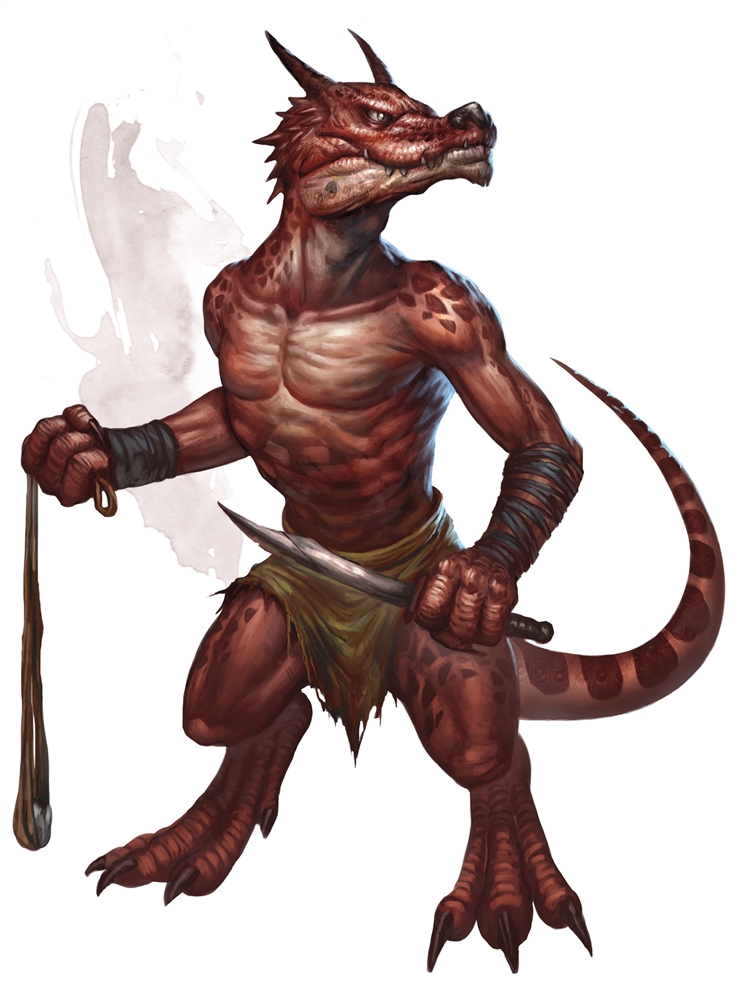Kobold
Smallscales
Kobold of the Scalechanged Legacy
Natural armor. You have tough, scaly skin. When you aren't wearing armor, your AC is 11 + your Dexterity modifier. You can use your natural armor to determine your AC if the armor you wear would leave you with a lower AC. A shield's benefits apply as normal while you use your natural armor.
Artistic. Your people decorate everything within their environment, and learn from a young age to paint, sculpt, and carve. You gain proficiency with one of the following tools: Painter's supplies, Mason's tools, Woodcarver's tools
Pack Tactics. You have advantage on an attack roll against a creature if at least one of your allies is within 5 feet of the creature and the ally isn't incapacitated.
Nimble Escape. You can take the Disengage or Hide action as a bonus action on each of your turns.
Cave Kobold
Sunlight Sensitivity. You have disadvantage on attack rolls and on Wisdom (Perception) checks that rely on sight when you, the target of your attack, or whatever you are trying to perceive is in direct sunlight.Darkvision. You can see in dim light within 60 feet of you as if it were bright light, and in darkness as if it were dim light. You can't discern color in darkness, only shades of gray.
Caver. Accustomed to life underground, you have advantage on Wisdom (Survival) checks to forage, navigate, or track while underground.
Burrow. You can burrow through earth, sand, mud, or ice at a speed of 5 feet.
Plains Kobold
Speed. Your base walking speed is 35 feet.Animal Husbandry. Accustomed to life herding or otherwise working with animals, you have advantage on Wisdom (Animal Handling) checks when dealing with beasts.
Strong runner. As a bonus action, you may gain extra movement equal to your current speed.
Weak Darkvision. You can see in dim light within 30 feet of you as if it were bright light, and in darkness as if it were dim light. You can't discern color in darkness, only shades of gray.
Mountain Kobold
Flight. You have a flying speed of 30 feet. To use this speed, you can't be wearing medium or heavy armor.Mountain born. You're acclimated to high altitude, including elevations above 20,000 feet. You're also naturally adapted to cold climates, as described in chapter 5 of the Dungeon Master's Guide.
Thick scales. Your natural armor is 12 + your Dexterity modifier.
Weak Darkvision. You can see in dim light within 30 feet of you as if it were bright light, and in darkness as if it were dim light. You can't discern color in darkness, only shades of gray.
Languages. High Draconic, Low Draconic
| Base Height | Height Modifier | Base Weight | Weight Modifier | |
|---|---|---|---|---|
| Cave Kobold | 2' 1" | +2d4 | 25 | x 1 lb. |
| Plains Kobold | 2'5" | +2d4 | 25 | x 1 lb. |
| Mountain Kobold | 2' 1" | +2d4 | 25 | x 1 lb. |
Basic Information
Anatomy
Males have larger, broader heads, and a shorter torso than females, with shoulders wider than their hips. Their torso length typically makes them somewhat shorter than females.
Females have smaller, more narrow heads, and a longer torso than males, with hips wider than their shoulders. Their torso length typically makes them somewhat taller than males.
Biological Traits
Cave Kobolds
Cave Kobolds art adapted to living underground in caves and warrens. They are short and squat, and walking slightly stooped forward, and are able to scramble on all fours as easily as they walk upright.Plains Kobolds
Plains Kobolds are lithe, with slightly longer arms and legs than their Cave cousins, and more muscle development in the legs, making them powerful runners.Mountain Kobolds
Mountain Kobolds are sleek and light, with membranous wings sprouting from their shoulders. To assist in flight, they have short, membranous crests on the tops of their heads. Mountain Kobolds have slightly shorter tails than other breeds.Genetics and Reproduction
Sexual maturity for both sexes occurs upon reaching adulthood.
Female kobolds are fertile every two months, laying one to three eggs in a communal hatchery. These eggs hatch within 2 to 3 months.
Growth Rate & Stages
Ecology and Habitats
Dietary Needs and Habits
Biological Cycle
Additional Information
Social Structure
Domestication
Geographic Origin and Distribution
Perception and Sensory Capabilities
Civilization and Culture
Naming Traditions
Courtship Ideals
Relationship Ideals
History





